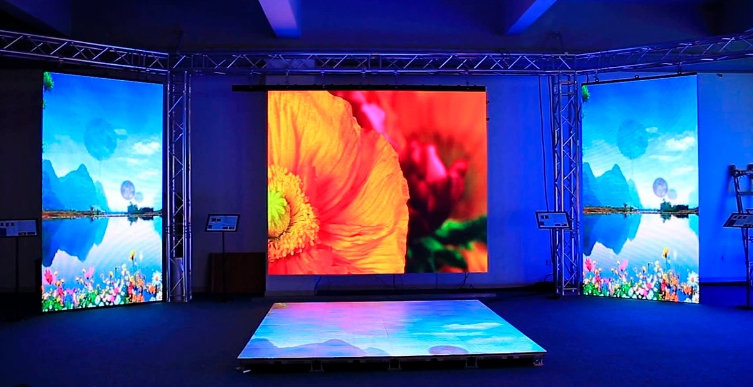LED package refers to the encapsulation or housing that contains the LED chip and provides protection, electrical connections, and optical control for the LED. It plays a crucial role in determining the performance, reliability, and characteristics of the LED, including light output, color, and beam angle. LED packages come in various forms and sizes, such as surface-mount devices (SMD), through-hole packages, and chip-on-board (COB) packages, and they are widely used in applications such as lighting, displays, automotive lighting, and more.

As mentioned in the beginning, there are several popular types of LED package in the market like below.
TH LEDs are traditional LED packages commonly used in applications where high durability and reliability are required. The LED chip is mounted on a metal lead frame, and the package is filled with an epoxy resin to protect the chip and provide mechanical support. TH LEDs have two leads that are inserted into holes on a circuit board for connection.
SMD LEDs are compact and widely used in various applications. The LED chip is mounted directly onto a ceramic or metal substrate, and the package is then encapsulated with epoxy resin. SMD LEDs are soldered onto the surface of a PCB using reflow soldering techniques, making them suitable for automated assembly processes.
COB LEDs feature multiple LED chips directly mounted onto a substrate, typically a ceramic or metal board. The chips are closely packed and connected in series or parallel. The entire COB module is then encapsulated with phosphor and resin for protection and light diffusion. COB LEDs provide high luminous efficacy and are favored for their compact size and excellent thermal management.
PLCC LEDs are compact and widely used in various lighting applications. The LED chip is mounted on a ceramic or plastic substrate, and the package is encapsulated with epoxy resin. PLCC LEDs have metal leads extending from the package, allowing for easy surface mount assembly.
High-power LED packages are designed to handle higher currents and deliver high lumen outputs. These packages often use ceramic substrates for better thermal management. They may incorporate advanced encapsulation techniques such as ceramic packaging, silicone encapsulation, or lens arrays to improve heat dissipation and light distribution.
The differences between these LED package technologies include factors such as package size, mounting method, thermal management capability, light output, and application suitability. The choice of encapsulation technology depends on the specific requirements of the application, including power requirements, space limitations, desired light output, and environmental conditions.

Among the above mentioned LED package methods, Surface-Mount Device (SMD) LEDs are currently the most popular and widely used. SMD LEDs offer several advantages that have contributed to their popularity:
Small form factor:
SMD LEDs are compact and have a flat profile, making them suitable for miniaturized applications and designs where space is limited.
Easy assembly:
SMD LEDs can be easily soldered onto the surface of a printed circuit board (PCB) using automated surface mount equipment, allowing for efficient and cost-effective manufacturing processes.
High versatility:
SMD LEDs are available in a wide range of sizes, colors, and specifications, providing flexibility for various lighting applications.
Enhanced thermal management:
SMD LED packages are designed with thermal management considerations, allowing for efficient heat dissipation and improved performance.
Improved light output:
SMD LEDs often incorporate advanced optical designs and improved light extraction technologies, resulting in enhanced brightness and light distribution.
Due to their versatility, ease of assembly, and compact size, SMD LEDs have become the go-to choice for applications such as general lighting, backlighting for displays, signage, automotive lighting, consumer electronics, and more. However, it’s important to note that the choice of LED encapsulation technology depends on specific application requirements, and other technologies like COB LEDs or high-power LED packages may be preferred for certain high-intensity or specialized applications.

After Surface-Mount Device (SMD) LEDs, Chip-on-Board (COB) LEDs can be considered the next popular LED package technology. COB LEDs have gained popularity in recent years due to their unique advantages.
High luminous efficacy:
COB LEDs offer high light output and luminous efficacy, making them suitable for applications that require bright illumination.
Compact size:
COB LEDs have a compact form factor, with multiple LED chips closely packed together on a single substrate. This allows for efficient space utilization and design flexibility.
Improved thermal management:
The close proximity of LED chips in a COB package facilitates better thermal management, as heat can be distributed more effectively across the substrate. This allows for improved reliability and longevity of the LED.
Simplified assembly:
COB LEDs simplify the assembly process compared to traditional individual LEDs, as the entire COB module can be soldered or mounted directly onto a PCB, reducing the number of components required.
Uniform light distribution:
The closely packed LED chips in a COB package result in more uniform light distribution, minimizing issues like color inconsistency, shadows, or hotspots.
COB LEDs are commonly used in applications such as downlights, track lighting, high-bay lighting, and architectural lighting, where high brightness, compact size, and efficient thermal management are important considerations. However, it’s worth noting that the popularity of LED package technologies can vary depending on specific industry trends, advancements in technology, and evolving application requirements.
Related Reading:
How LED Packaging Affects The Quality of LED Displays >>>
LED Packaging Structure, Process Development Status And Trends >>>
Everything about LED Packaging >>>